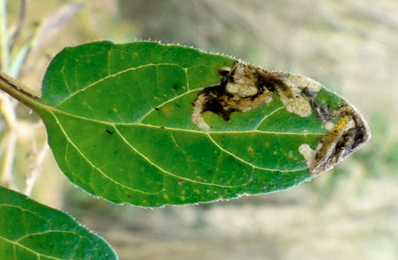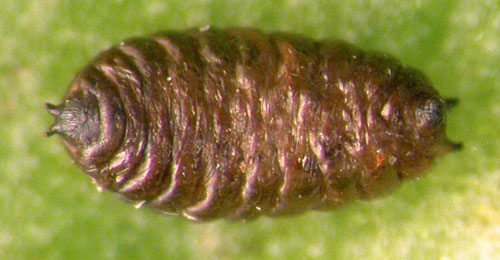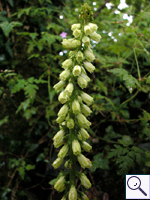|
||||||
|
UMBILICUS. Navelwort or Wall Pennywort. [Crassulaceae] |
|
|
Only one species of Umbilicus is recorded in Britain - Navelwort (U. rupestris). It is a native species. Four British miners are recorded on Umbilicus. The tortricid Cnephasia conspersana is recorded as a seed / shoot-feeder on Umbilicus in Britain. A key to the European miners recorded on Umbilicus is provided in Bladmineerders van Europa. |
|
Key for the identification of the known mines of British |
1a > Leaf-miner: Full depth mine; in parts of the mine the parenchyma remain untouched. The larva enters and exits the leaf by means of an oval opening of 3-5 mm at the base, near the leaf edge. Pupation external. Forms a deep mine with plentiful frass. The larva changes leaves entering and leaving near the leaf edge. |
|
Cheilosia semifasciata Becker, 1894 [Diptera: Syrphidae]. |
1b > Leaf-miner: In the first instar the larva mines the leaves, forming short, irregular, blotch-like mines, but in later instars it lives externally, feeding in spun leaves and often twisting those of tender shoots. Larval head light-brown or yellowish brown, edged with black postero-laterally, ocellar area blackish; prothoracic plate black edged with whitish anteriorly; abdomen dull dark green; pinacula distinct, black, sometimes brownish but with black bases to setae; anal plate large, black (Bradley et al., 1973). Small, full depth mine without a definite shape; little frass. Some silk is deposited in the mine. The larva soon leaves the mine and continues feeding among spun leaves. |
|
Cnephasia incertana (Treitschke, 1835) [Lepidoptera: Tortricidae]. |
1c > Leaf-miner: Rather narrow corridor, untidy and sometimes branched, starting from the base of the leaf, in particular the midrib. Sides of the corridor irregularly eaten out, not really parallel. Frass mostly present, and then in a central line. The larva is capable of leaving the mine and start a new one elsewhere. These later mines are much broader, and the frass is scattered irregularly.. |
 Mine of Orthochaetes insignis on Prunella vulgaris Image: © Jean-Yves Baugnée (Bladmineerders van Europa) |
|
Orthochaetes insignis (Aube, 1863) [Coleoptera: Curculionidae]. |
1d > Leaf-miner: A shallow, irregularly linear mine which can develop into a secondary blotch (Spencer, 1972b: 90). Pupation internal, the puparium loose in the mine (Spencer, 1976: 494). Upper-surface, whitish (shallow), strongly contorted corridor, that may form a secondary blotch. Frass in a few, widely scattered grains. Pupation mostly within the mine; in front of the brown puparium lies a preformed exit slit. |
 Phytomyza sedicola puparium Image: © Willem Ellis (Bladmineerders van Europa) |
|
Phytomyza sedicola Hering, 1924 [Diptera: Agromyzidae]. |
| Last updated 08-Jul-2019 Brian Pitkin | ||

